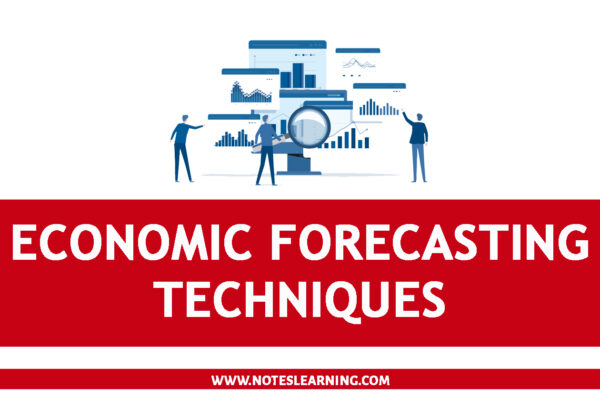Introduction
Economic forecasting simply means making informed predictions about future economic conditions, opportunities, trends and developments. This includes assessing and analyzing the historical evidence and current economic scenarios to make projections about macro variables of the economy. Macro-economic variables include GDP growth, inflation rates, unemployment rates, interest rates etc.
Elliott, G. and Tinnermann, A. describe economic forecasting in their work “Economic Forecasting for Business” as the process of predicting the future state of an economy. In particular, it involves the use of past and current economic data to predict future values of one or more economic variables of interest.
Economic forecasting is essential to make informed decisions, plan for the future and navigate economic uncertainties. There are different techniques used indifferent scenarios to forecast the economy. We will present some of such techniques to economic forecasting.
Economic Forecasting Techniques
The selection and use of economic forecasting techniques may vary due to usage, context and availability of data. Some of such economic forecasting techniques are:
Time Series Analysis
Time series analysis studies the data collected over a sequence of time intervals to identify trends and patterns. The data for this analysis are collected through observation at regular intervals of time, creating a chronological sequence. Time series analysis helps in identifying long-term trends in economic data such as GDP growth or inflation rates. Similarly, economists use these techniques to evaluate the effectiveness of economic policies by tracking the impact of policy changes on economic variables over time. Similarly, this analysis is used for making economic seasonal adjustment, identifying economic cycles and patterns and understanding volatility. Some of the techniques are:
- Moving Average
- Seasonal Decomposition
- Autoregressive Integrated Moving Average Models
- Bayesian Time Series Models
- Time Series Data Mining
Regression Analysis
This analysis is a statistical technique for forecasting the economic parameters to establish and quantify the relationships between economic variables. Regression analysis establishes the relationship between dependent and independent variables. Regression analysis contributes to economic forecasting by quantifying the strength and direction of relationships between economic variables i.e. impact of interest rates on consumer spending. Similarly, regression analysis helps in understanding the interaction between multiple economic factors and how they behave.
Regression analysis also helps in assessing the risk associated with the economic forecast. This way, this analysis also helps in risk management. Along with this, there are multiple ways how regression analysis helps in economic forecasting. Some of the techniques in regression analysis are:
- Linear Regression
- Multiple Regression
- Ridge Regression
- Robust Regression
- Bayesian Regression
Agent Based Model
Agent Based Model offers a valuable tool for economic forecasting. These models stimulate the interactions of individual entities in an economy and predict and forecast it to emergent behavior and trends. In this model, there are agents (individuals) who are in the environment (city or nation) interacting with each other.
The individual behavior (interaction) of the agents in the controlled environment over the time period deduce the emerging behavior in the bigger perspective (economy). Agent based model collects the data and analyzes how the agents’ behavior and the system as a whole change over the time.
Vector Autoregression (VAR) Method
VAR method is a statistical method of economic forecasting. The VAR model considers multiple variables simultaneously, making variables suitable for forecasting when multiple factors interact. This model is generally preferred for short to long-term forecasting and policy analysis. It is a more technical and dynamic model for forecasting the economic parameters.
Leading Indicators
Leading indicators are economic components and most used factors for economic forecasting. Change and shift in such leading indicators provides valuable information about the behavior and market trends. Some of such leading indicators are:
- Stock Market Performance
- Consumer Confidence Index
- Business Confidence Index
- Unemployment Claims
- Yield Curves
- Consumer Credit
- Money Supply
- International Trade Data
Econometric Models
Econometric Models provide a structured and data driven approach to understanding and predicting economic behavior. Econometrics models quantify the relationships between economic variables such as GDP, inflation, interest rate, employment etc. Econometric models are used for goodness of fit, significance of parameters, and statistical adequacy. Econometric models help in forecasting, policy analysis, scenario analysis, market analysis etc.
Survey Based Forecasts
This is another economic forecasting technique which gathers information through surveys conducted among various economic agents. Surveys aim to capture the sentiment, interest, likes and dislikes, opinions, expectations and suggestions regarding the economic conditions. Survey based forecast include:
- Consumer Confidence Surveys
- Business Sentiment Surveys
- Analyst and Expert Surveys
- Inflation Expectation Surveys
Reference


